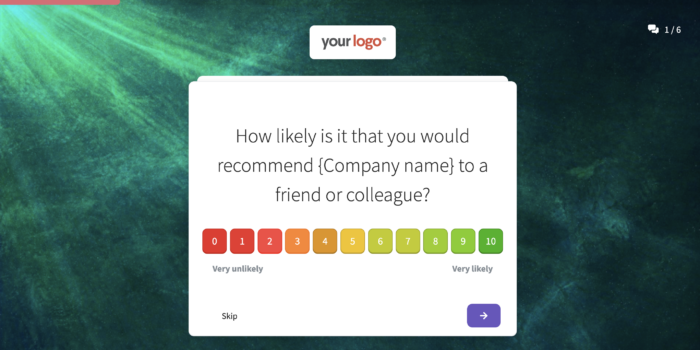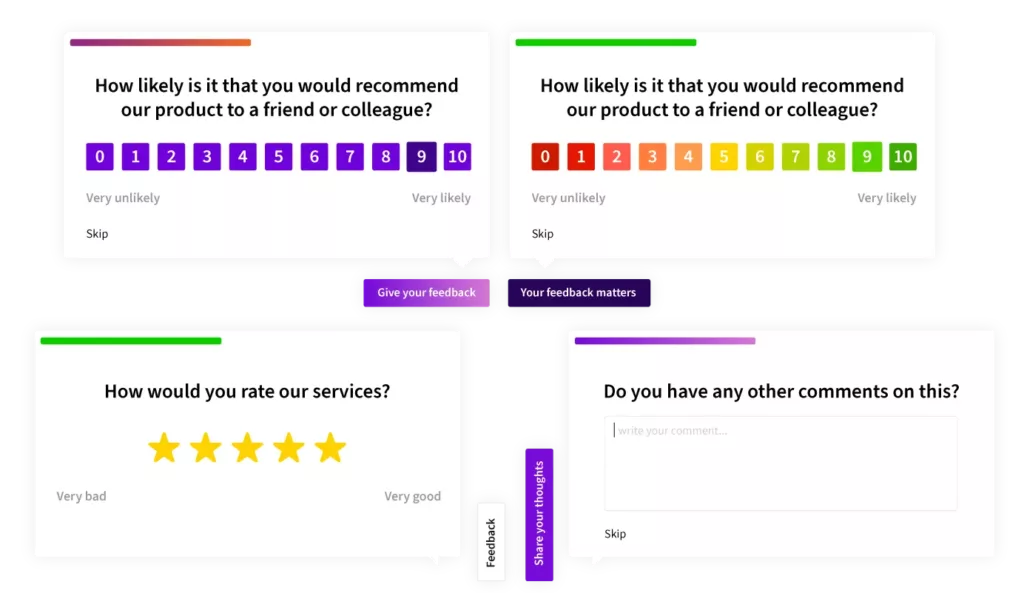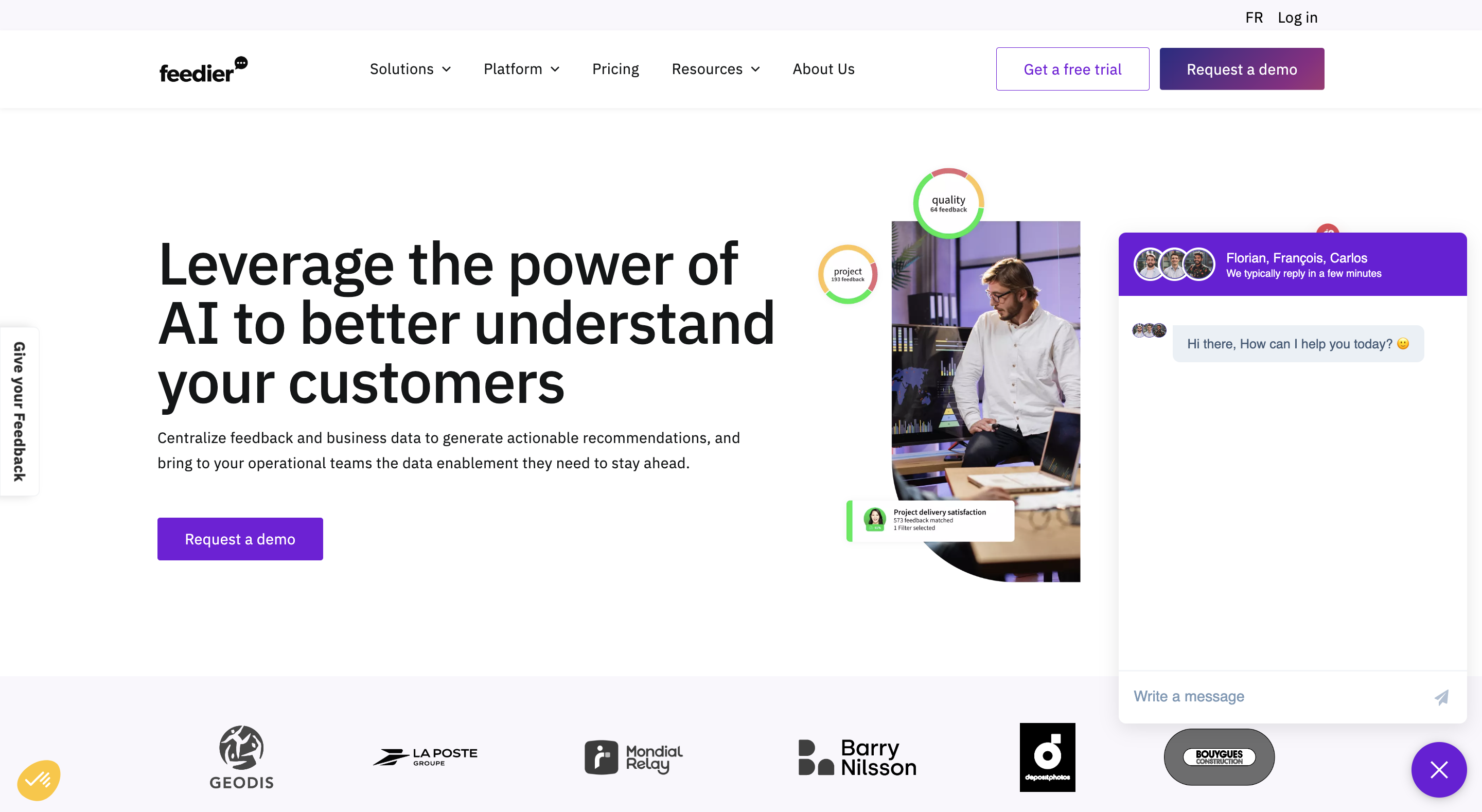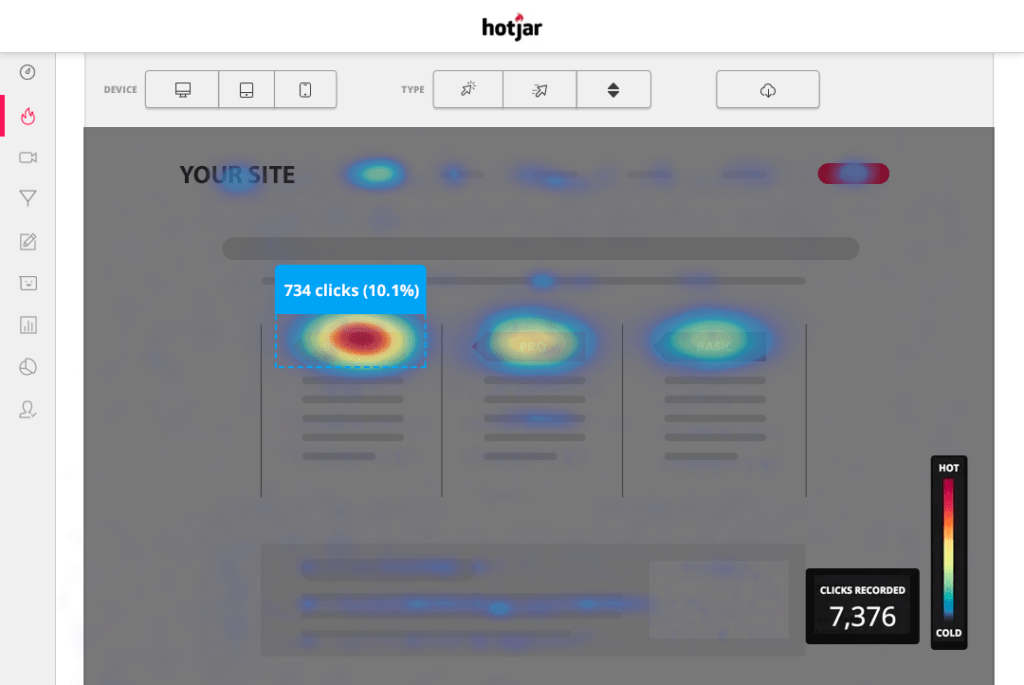Gathering user feedback is a key element for companies wishing to improve their product or service. Companies need to understand their users’ needs and areas of dissatisfaction to remain competitive in the marketplace.
Yet many companies underestimate the importance of collecting user feedback. They may think their product is perfect as it is, and fail to see the need to invest time and resources in collecting feedback. This is a costly mistake that can lead to poorly designed and little-used products.
Gathering user feedback can be done in a variety of ways: surveys, online reviews, face-to-face interviews and so on. It’s also important to use different channels to collect user feedback, such as social media, e-mail and online forums. This makes it possible to reach a wider audience and gather diverse opinions.
Ultimately, collecting user feedback is essential to improving your product or service and guaranteeing your users’ satisfaction. So it’s important to take this task seriously and put in place effective methods for collecting and analyzing user feedback.
Types of user feedback to consider
User feedback can take many forms, depending on the context and objectives of the collection. Here are the main types of feedback to take into account:
Direct feedback via forms
Direct feedback via forms is one of the most common methods of collecting user opinions. At Feedier, we call them satisfaction micro-surveys. These forms can be integrated directly into your website or application, or emailed to your users. In this article, we’ll take a closer look at the different ways of collecting user feedback, including forms.

Understanding users through their behavior
By analyzing user activity and behavior through analysis tools and user session recordings, it’s possible to obtain indirect or involuntary feedback. This method provides valuable information on the user journey, motivations, most-used features, obstacles encountered, as well as more or less complex parts of your product.
Using this indirect feedback, you can improve the user experience in a targeted and effective way. By identifying problems and friction points in the user journey, you can provide appropriate solutions and optimize your product.
Usability testing
Launching usability tests is an effective way of gathering user feedback on your product. By involving your first users, testers or your network, you can quickly identify the positive and negative points of your product. These tests, which can be carried out by telephone, face-to-face or voluntarily by your users, enable you to gather valuable feedback on the user experience.
By collecting this feedback, you’ll be able to understand your users’ needs, map their journey and make targeted improvements to your product, platform or website.
Ask users for feedback in person
Asking for user feedback orally is an effective way of gathering direct feedback on your product. However, it can be quite time-consuming, and user feedback can be biased by the effect of your presence. This approach can be used in face-to-face meetings, telephone calls or webinars. By asking users targeted questions, you can obtain detailed feedback on their experience, their level of satisfaction, the strengths and weaknesses of your product, and so on.
This method offers several advantages, such as the ability to establish a relationship of trust with your users, ask open-ended questions to obtain more detailed opinions, and collect instant feedback.
The 7 best ways to collect user feedback
Now that we’ve seen the different types of user feedback you can collect, let’s take a look at the best ways to collect it. Indeed, there are several methods for collecting feedback, each with its advantages and disadvantages in terms of cost, time and efficiency. Whether you opt for online surveys, user tests or face-to-face interviews, it’s important to prepare well and follow best practices to obtain relevant, usable feedback.
1. Web In-App Feedbacks: integrated satisfaction surveys
In-app feedbacks are particularly important for websites, platforms and SaaS, as they enable direct feedback to be collected from users while they are using the product. By placing a feedback form directly on your website, platform or SaaS, you can gather valuable information on user experience, problems encountered and suggestions for improvement.
However, to maximize the effectiveness of your in-app feedback widget, it’s essential to place it at the right place in the user journey and at the right time. Avoid asking too many questions at the wrong time, as this can negatively affect the user experience and reduce the propensity of users to give feedback. Give users enough time to test the product before asking for feedback, and place the feedback form at an appropriate point in the user journey, for example on the page where a new feature is available.
By segmenting your users and displaying the in-app feedback form at the right time according to their behavior, you can improve the effectiveness of this method. When you collect quality feedback, you can identify areas for improvement on your website, platform or SaaS, and enhance the overall user experience. By following best practices and using a well-designed in-app feedback form, you can obtain valuable feedback to improve your product and meet your users’ needs.

Feedier’s in-app feedback widget is easy to integrate into your website, platform or SaaS. Using Google Tag Manager, you can add the feedback widget to your website without the need for developer assistance. Setting up the in-app feedback widget is quick and easy, and you can easily customize the appearance and behavior of the feedback form to suit your needs. Using this method, you can collect quality feedback, improve the user experience and optimize your product according to your users’ needs.
See our dedicated in-app feedback widget page to find out more about this feature.
2. Use live chat to collect user feedback
Live chats are becoming an increasingly popular part of customer success strategies for businesses. As well as providing customer support and generating leads for marketing, Live Chat can also be used to collect user feedback.
For example, for an e-mail campaign creation tool, you can take the opportunity when the user has finished creating their campaign and scheduled it for later to subtly ask for feedback on your e-mail campaign creator.
What’s more, you can automate feedback gathering by using Chatbots. Tools such as Hubspot make it easy to create Chatbots for this function.

By using live chats to collect feedback, you can offer your users a personalized experience and gather highly accurate information in real time. This method of collecting direct feedback can help improve your product and overall user experience.
Feedier offers a feedback solution that collects user feedback from a variety of channels, including Hubspot Chatbots. This two-way integration offers the possibility of centralizing all feedback data in one place, and analyzing trends and recurring problems. This makes it possible to adapt the product to meet users’ needs and dissatisfactions, resulting in a more satisfying user experience.
3. Email campaigns
Email remains one of the most effective media for communicating with your users. They also offer a convenient way of collecting feedback from users by asking them questions during your exchanges, or by sending a direct link to a satisfaction survey.
It’s even possible to integrate the feedback form directly into the email to simplify the process. Make sure the content of the email is clear and concise, and include a sentence or two to explain how the satisfaction survey will help improve the product.
Finally, don’t forget to include a CTA (call-to-action) to encourage users to provide feedback. Too many links in an email can confuse the user, so it’s important to keep the email simple and easy to understand.

Feedier offers a module for creating email and SMS feedback campaigns. This feature makes it easy to collect feedback from users via their mailbox, without them having to navigate to another page or platform. Campaigns can be customized and tailored to the specific needs of each company, with options for tracking open and response rates. Thanks to this functionality, companies can collect feedback more proactively, and thus improve the user experience.
4. Incentives to collect quality feedback
To encourage users to provide quality feedback, many companies offer rewards in exchange for their participation. These rewards can take various forms, such as discounts, vouchers, extended trial periods, or even free access to the platform.
Offering rewards in exchange for feedback can encourage users to give more detailed and useful reviews, enabling companies to better understand their users’ needs and improve the user experience. It’s important to ensure that rewards are well adapted to your users’ expectations, and that they are not perceived as too strong an incentive.
5. How to use user testing to improve UX and UI
User testing is an effective way of gathering qualitative feedback on new products or functionalities. These tests enable us to understand the overall user experience of the product, and to receive precise feedback on areas for improvement.
Testers can help identify which features appeal to users, which parts of the product they don’t understand, and whether they are using the product appropriately. This information can be used to improve the user interface (UI) and user experience (UX).
By using user testing, companies can better understand the needs and expectations of their users, and use this information to develop products that better meet their expectations. User testing is an essential tool for companies looking to improve their UX and UI, and offer their users a better experience.
6. Gather quantitative feedback by analyzing the entire user journey
You can also obtain quantitative feedback by analyzing the entire user journey. Users are already providing indirect feedback by actively using your product, and your task is to uncover it. Utilize the analytics tools to track user behavior on your product, enabling you to analyze their journey, actions, encountered problems, and frequently used features. This information empowers you to proactively enhance your product before users report any friction points. Additionally, session recording tools, such as heat maps, offer insights into user behavior and highlight the most engaging areas of your product.
7. Direct conversations with your customers
Direct conversations with your customers are the best way to get quality feedback on your application. Although this can be difficult to set up, by phone or video can be a solution. By having a natural flow of discussion, you can ask specific questions and even get additional information about the user experience.
These conversations can also help build a relationship with your users, which can lead to increased loyalty and better customer retention.
Note: We’ve written an article on the best online feedback tools, available here.
Summary
In summary, user feedback is a key element in improving your business and focusing on your customers’ needs. Ever since companies like Amazon introduced the “customer-centric” approach, successful businesses have turned to the customer first. While some may not consider user feedback an essential element, it is essential for learning quickly about your product or service. It’s important to remember that collecting feedback is pointless if you don’t analyze it and act on it.








